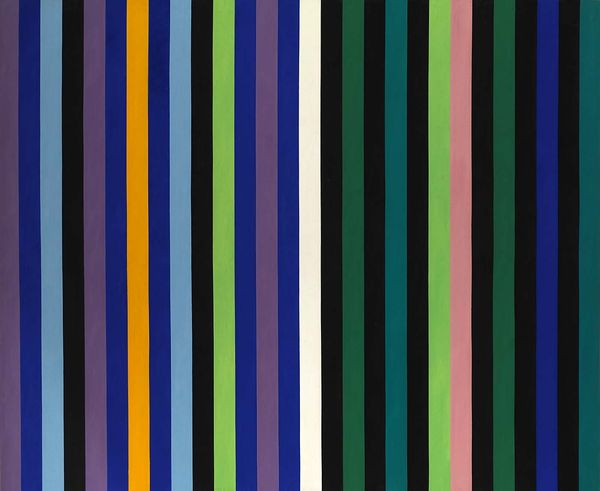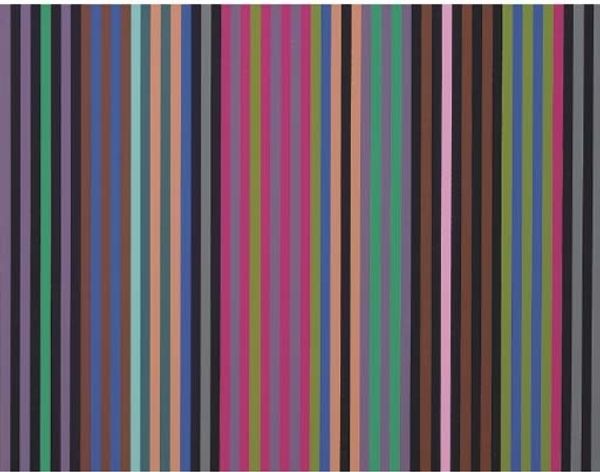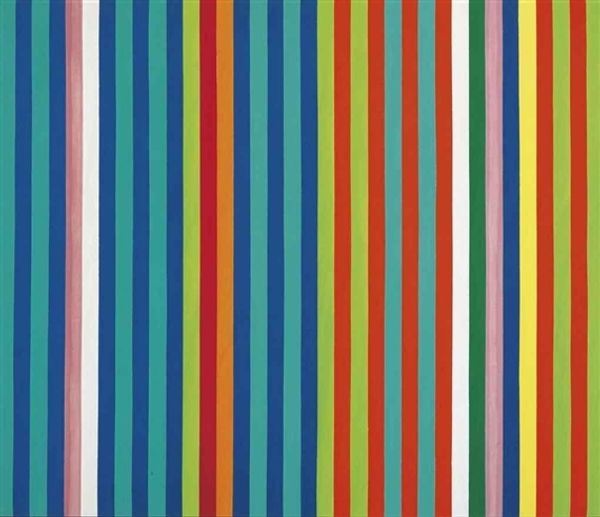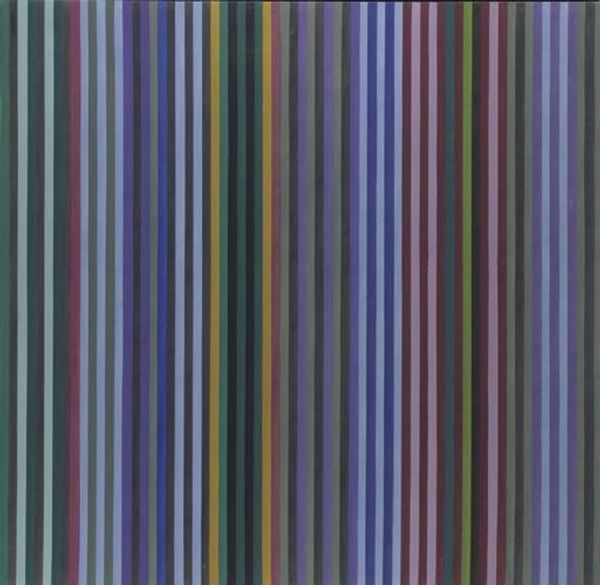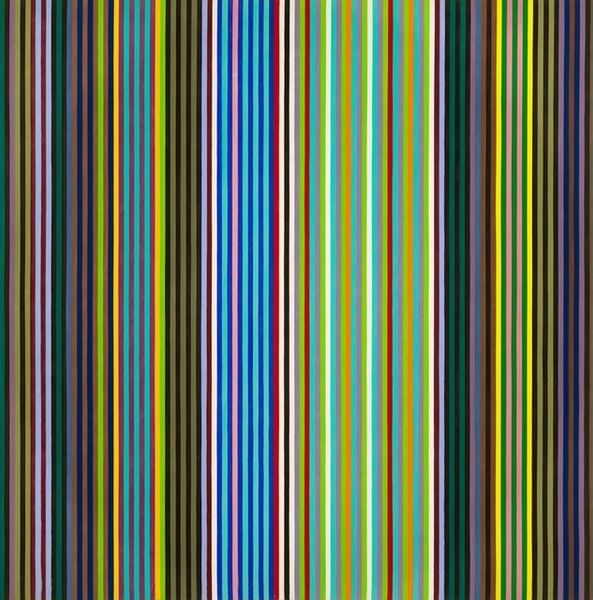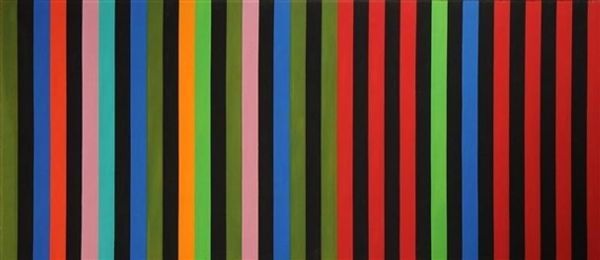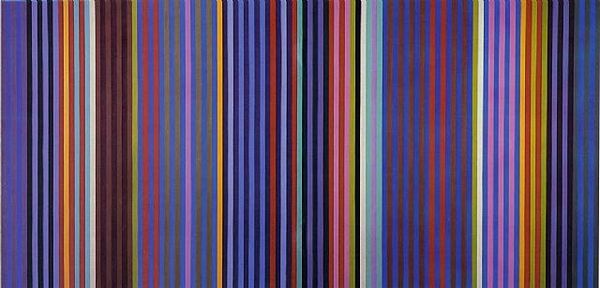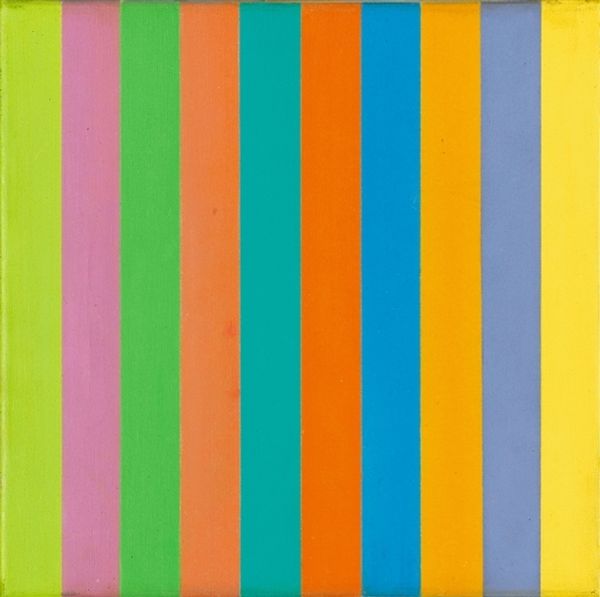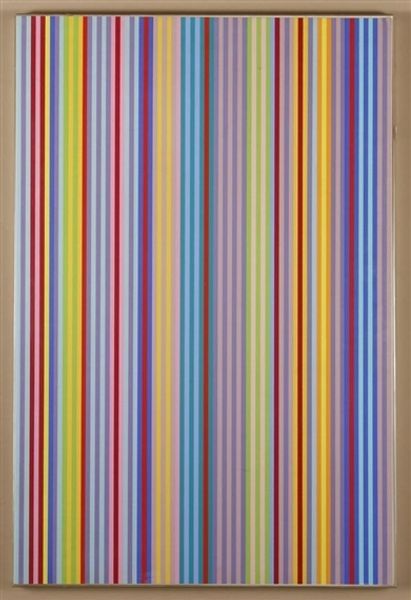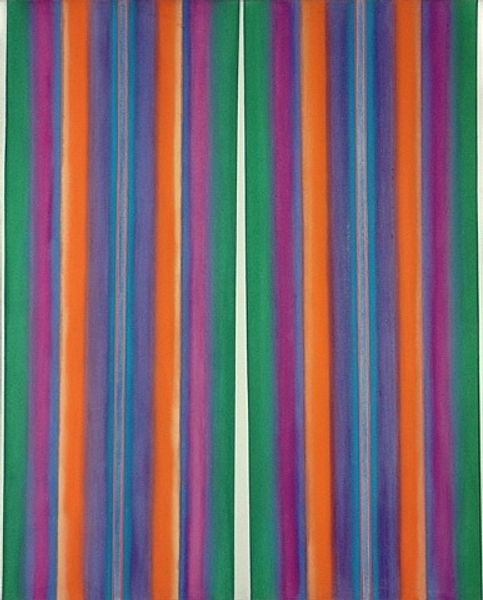
painting, acrylic-paint
#
painting
#
pattern
#
acrylic-paint
#
geometric pattern
#
geometric
#
geometric-abstraction
#
repetition of pattern
#
line
#
modernism
Copyright: Guido Molinari,Fair Use
Curator: Well, I'm immediately seeing beach umbrellas on some kind of stylish, minimalist coastline. How does that strike you? Editor: Interesting! I'm looking at Guido Molinari's "Seriel bleu-ocre," painted in 1967 with acrylic, and finding more than just a vacation vibe, I'm afraid! What initially appears simple is really a carefully calibrated interplay of colour and form. Curator: Tell me more. The beach still wants to beckon. Editor: The colours Molinari uses - those blues and ochres of course, but also that soft grey, greens, and the pop of mauve - are very precisely balanced. Notice how your eye jumps around? It's not a passive viewing experience. The verticals don’t necessarily define, but energize. Curator: I see what you mean; these bands create an internal visual vibration. It’s hypnotic, yet also… calm. Is that the intention, do you think? A kind of controlled chaos? Editor: Partly, I think. These repetitive structures also represent the modernist desire to find pure form and emotion, a fundamental structure underlying visual experience. It speaks to this era, where so much seemed open to questioning, from war to societal norms to what constitutes 'art' itself. It's very of its time. Curator: Ah, a visual manifestation of a search for structure amid upheaval, or trying to find order in chaos. Editor: Precisely. The colours aren’t symbolic in the traditional sense, more triggers or keys for internal landscapes and feelings. It's meant to move you, in a completely different way than art with figures would. The vertical also traditionally symbolises the human drive. The artist uses line as the starting block to the bigger ideas! Curator: The regularity gives a certain authority, and it allows the colours to really have an impact, for better or worse. Looking at it that way gives me new insight to how it’s trying to ‘teach’ the viewer something. A lesson or observation about human structure and society as the artist sees it, I wonder? Editor: Perhaps a conversation starter is a better way to put it. An interesting observation for our time as much as Molinari’s. It definitely got me thinking. Curator: Same here! Thanks, I think my idea of stripes might just never be the same!
Comments
No comments
Be the first to comment and join the conversation on the ultimate creative platform.
